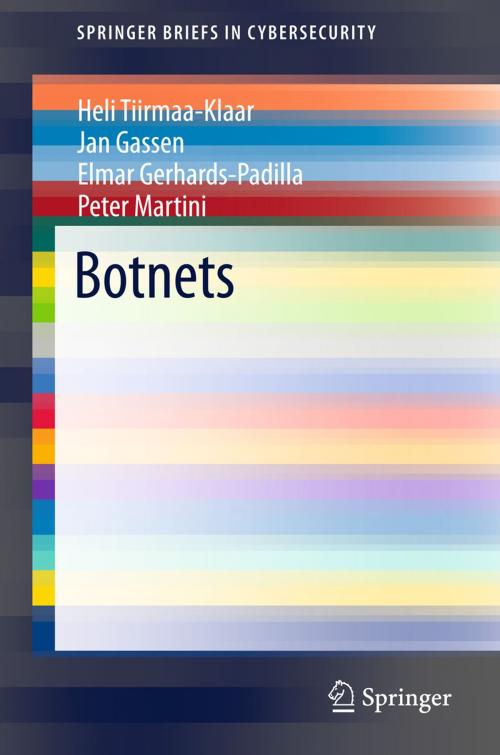Botnets
Nonfiction, Computers, Networking & Communications, Computer Security, Operating Systems, Application Software| Author: | Heli Tiirmaa-Klaar, Jan Gassen, Elmar Gerhards-Padilla, Peter Martini | ISBN: | 9781447152163 |
| Publisher: | Springer London | Publication: | June 29, 2013 |
| Imprint: | Springer | Language: | English |
| Author: | Heli Tiirmaa-Klaar, Jan Gassen, Elmar Gerhards-Padilla, Peter Martini |
| ISBN: | 9781447152163 |
| Publisher: | Springer London |
| Publication: | June 29, 2013 |
| Imprint: | Springer |
| Language: | English |
Malware poses one of the major threats to all currently operated computer systems. The scale of the problem becomes obvious by looking at the global economic loss caused by different kinds of malware, which is estimated to be more than US$ 10 billion every year. Botnets, a special kind of malware, are used to reap economic gains by criminals as well as for politically motivated activities. In contrast to other kinds of malware, botnets utilize a hidden communication channel to receive commands from their operator and communicate their current status. The ability to execute almost arbitrary commands on the infected machines makes botnets a general-purpose tool to perform malicious cyber-activities.
Botnets provides a comprehensive analysis of the topic, and comprises both technical and non-technical sections written by leading cybersecurity experts.
The non-technical section addresses how botnet infrastructure could be exploited for national security and cybercrime purposes. It approaches the subject as a public policy issue and analyzes the phenomenon of botnets from national security, law enforcement and regulatory policy perspectives, and makes recommendations for policy-makers on different public policies, highlighting the need for international response mechanisms.
The technical section provides insight into current botnet techniques and discusses state-of-the-art countermeasures to combat the botnet threat in detail. It includes new detection methods as well as different approaches to actively compromise running botnets.
Malware poses one of the major threats to all currently operated computer systems. The scale of the problem becomes obvious by looking at the global economic loss caused by different kinds of malware, which is estimated to be more than US$ 10 billion every year. Botnets, a special kind of malware, are used to reap economic gains by criminals as well as for politically motivated activities. In contrast to other kinds of malware, botnets utilize a hidden communication channel to receive commands from their operator and communicate their current status. The ability to execute almost arbitrary commands on the infected machines makes botnets a general-purpose tool to perform malicious cyber-activities.
Botnets provides a comprehensive analysis of the topic, and comprises both technical and non-technical sections written by leading cybersecurity experts.
The non-technical section addresses how botnet infrastructure could be exploited for national security and cybercrime purposes. It approaches the subject as a public policy issue and analyzes the phenomenon of botnets from national security, law enforcement and regulatory policy perspectives, and makes recommendations for policy-makers on different public policies, highlighting the need for international response mechanisms.
The technical section provides insight into current botnet techniques and discusses state-of-the-art countermeasures to combat the botnet threat in detail. It includes new detection methods as well as different approaches to actively compromise running botnets.















